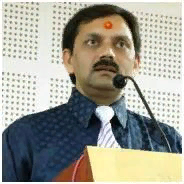International Journal of Image, Graphics and Signal Processing (IJIGSP)
IJIGSP Vol. 8, No. 11, 8 Nov. 2016
Cover page and Table of Contents: PDF (size: 886KB)
Real Time Depth Data Refurbishment in Frequency Domain and 3D Modeling Map Using Microsoft Kinect Sensor
Full Text (PDF, 886KB), PP.49-58
Views: 0 Downloads: 0
Author(s)
Index Terms
Depth sequence, warping, holes, kinect sensor, morphological operation, 3-D map, 2-D filter, frequency domain
Abstract
The present decade has seen the growth of both, the software and hardware for three dimensional televisions in real time applications. Depth map is fundamental key of 3-Dimensional algorithms. Reliable depth map is an acceptance in 3D transmission, analysis and compression of algorithm. Computer vision and pattern recognition research fields use sensor like low cost Microsoft kinect. Kinect sensor suffers from some problems of noise, poor accuracy and unmatched edges. This paper presents effective solution to improve the real time depth sequences and real time 3-D map using warping method from kinect sensor.
We proposed real time frequency domain based depth data refurbishment and improve the quality of depth video provided by sensors' Microsoft Kinect. The quality of the depth map is improved by depth refurbishment in frequency domain technique, filling the holes present in the maps, 2-Dimensional spatial filtering and permutation of morphological operation. We show that the proposed approach is able to generate high quality depth maps which can be quite useful in improving the performance of various applications of Microsoft Kinect such as obstacle detection and avoidance, pose estimation, gesture recognition, skeletal and facial tracking, etc. We produce the real time 3-D map using warping method. An experimental result shows that the quality of our proposed method is better than previous research works. Our algorithm produces noise less, reliable, smooth and efficient depth sequence. The qualitative parameter Peak Signal to Noise Ratio (PSNR), Structure Similarity Index Map (SSIM) and Mean Square Error (MSE) measure the real time results for comparative analysis.
Cite This Paper
Kapil S. Raviya, Dwivedi Ved Vyas, Ashish M. Kothari,"Real Time Depth Data Refurbishment in Frequency Domain and 3D Modeling Map Using Microsoft Kinect Sensor", International Journal of Image, Graphics and Signal Processing(IJIGSP), Vol.8, No.11, pp.49-58, 2016. DOI: 10.5815/ijigsp.2016.11.07
Reference
[1]Ling Shao, "Computer Vision for RGB-D Sensors: Kinect and Its Applications", IEEE Transactions On Cybernetics, Vol. 43, No. 5, October 2013.
[2]J. Smisek, M. Jancosek, and T. Pajdla, "3-D with Kinect," in Proc. IEEE ICCV Workshops, 2011, pp. 1154–1160.
[3]J. Geng, "Structured-light 3-D surface imaging: A tutorial," Adv. Optics Photonics, vol. 3, no. 2, pp. 128–160, 2011.
[4]I. Tashev, "Recent advances in human-machine interfaces for gaming and entertainment," Int. J. Inform. Technol. Security, vol. 3, no. 3, pp. 69–76, 2011.
[5]K. Kumatani, T. Arakawa, K. Yamamoto, J. McDonough, B. Raj, R. Singh, and I. Tashev, "Microphone array processing for distant speech recognition: Towards real-world deployment," in Proc. APSIPA Annu. Summit Conf., 2012, pp. 1–10.
[6]T. Mallick, "Characterizations of Noise in Kinect Depth Images: A Review," IEEE Sensors Journal, VOL. 14, NO. 6, pp. 1731-1740, 2014.
[7]Jungong Han, "Enhanced Computer Vision with Microsoft Kinect Sensor: A Review," IEEE Transactions On Cybernetics, Vol. 43, No. 5, pp. 1318-1334, 2013.
[8]http://www.xbox.com/en-US/kinect/default.htm, Kinect Camera [online].
[9]Xinchen Ye, Jingyu Yang, "Computational Multi-View Imaging with Kinect," IEEE Transactions On Broadcasting, Vol. 60, No. 3, pp. 540-554, September 2014.
[10]Li Chen, Hui Lin, "Depth Image Enhancement for Kinect Using Region Growing and Bilateral Filter," ICPR 2012, 978-4-9906441-1-6 pp. 3070-3073, IAPR, Tsukuba, Japan, 2012.
[11]M. Sigdel, "Depth-Color Image Registration for 3D Surface Texture Construction using Kinect Camera System," 978-1-4799-6585-4, IEEE, 2014.
[12]Chih-Hsien Hsia, "Improved Depth Image-Based Rendering Using an Adaptive Compensation Method on an Autostereoscopic 3-D Display for a Kinect Sensor," IEEE Sensors Journal, Vol. 15, No. 2, pp. 994-1002, Feb 2015.
[13]Na-Eun Yang, Yong-Gon Kim, "Depth Hole Filling Using the Depth Distribution of Neighboring Regions of Depth Holes in the Kinect Sensor," 978-1-4673-2193-8,pp. 658-661, IEEE, 2012.
[14]K. Rao, Joohee Kim, "Refinement of Depth Maps Generated By Low-Cost Depth Sensors," 978-1-4673-2990-3, pp. 355-358, ISOCC, IEEE, 2012.
[15]K. Khoshelham and S. Elberink, "Accuracy and resolution of Kinect depth data for indoor mapping applications," Sensors, vol. 12, no. 2, pp. 1437–1454, 2012.
[16]Yatong Xu, Xin Jin,"Spatial-temporal Depth De-noising for Kinect based on Texture Edge-assisted Depth Classification," IEEE, ICDSP, 978-1-4799-4612-9, pp. 327-332, 2014.
[17]Ashish M. Kothari,Ved Vyas Dwivedi, "Hybridization of DCT and SVD in the Implementation and Performance Analysis of Video Watermarking," International Journal of Image, Graphics and Signal Processing (IJIGSP), Print: ISSN 2074-9074 & Online: ISSN 2074-9082,2012
[18]Jinhui Hu," Kinect depth map based enhancement for low light surveillance image," IEEE, pp. 1090-1094, 978-1-4799-2341-0, 2013.
[19]Din-Yuen Chan, Che-Han Hsu Regular, "Stereo Matching Improvement System Based on Kinect-supporting Mechanism,"Scientific research, Open journal of applied science, 3, page 22-26 2013.
[20]X. Ye; J.Yamg; Hao Huang; ChunpingHou; and Yao Wang, "Computational multiview imaging with Kinect," IEEE transactions on broadcasting, Vol. 60, Issue 3, Pages: 540 – 554, 2014.
[21]Akash Bapat,"An iterative, non-local approach for restoring depth maps in RGB-D images,"IEEE Conference on Communications (NCC), 2015 Twenty First National, Pages: 1-6, 2015.
[22]Ashish M. Kothari, Ved Vyas Dwivedi, "Video Watermarking – Embedding binary watermark into the digital video using hybridization of three transforms," International Journal of Signal and Image Processing Issues Vol. 2015, no. 1, pp. 9-17 ISSN: 2458-6498.


